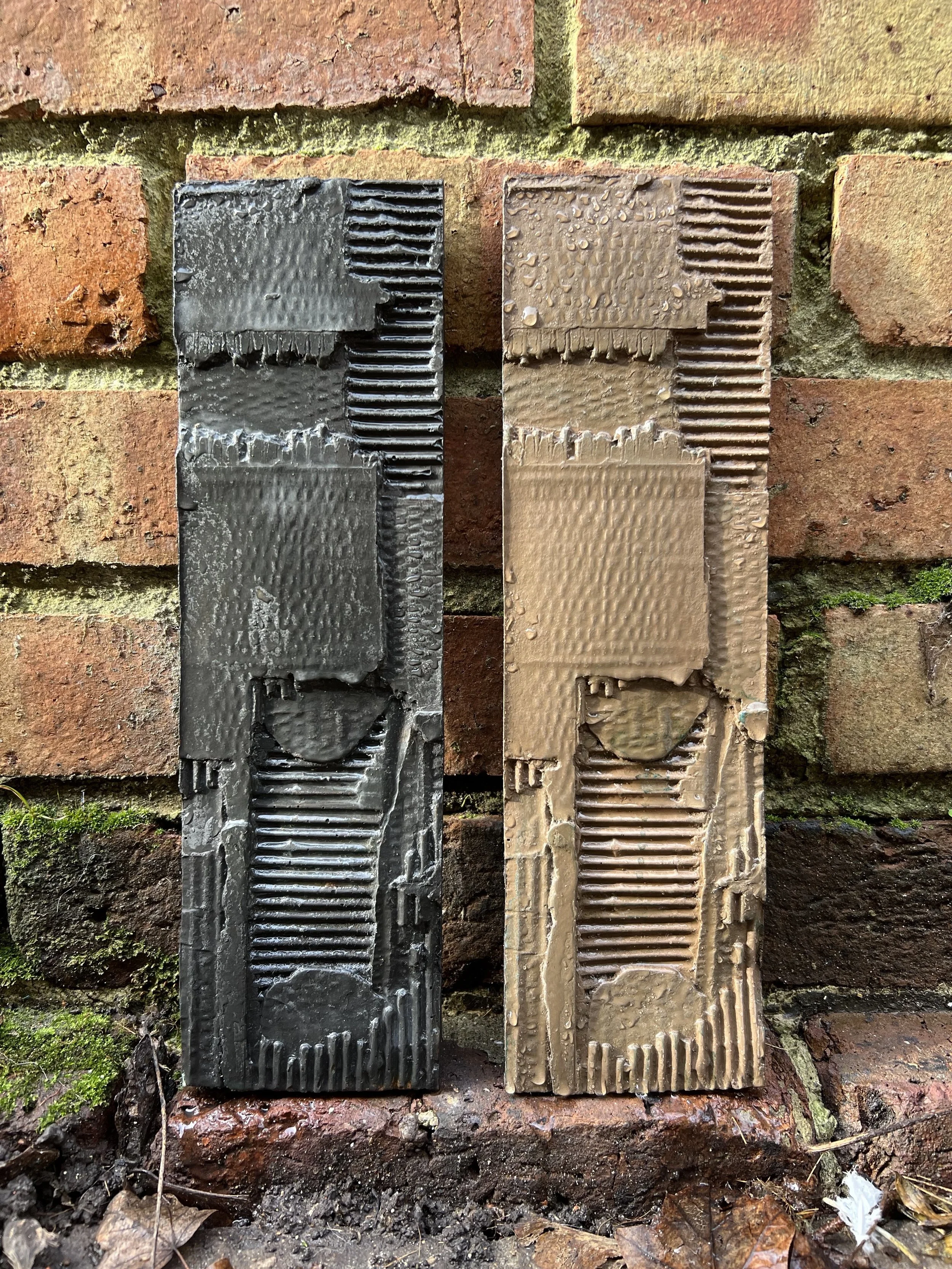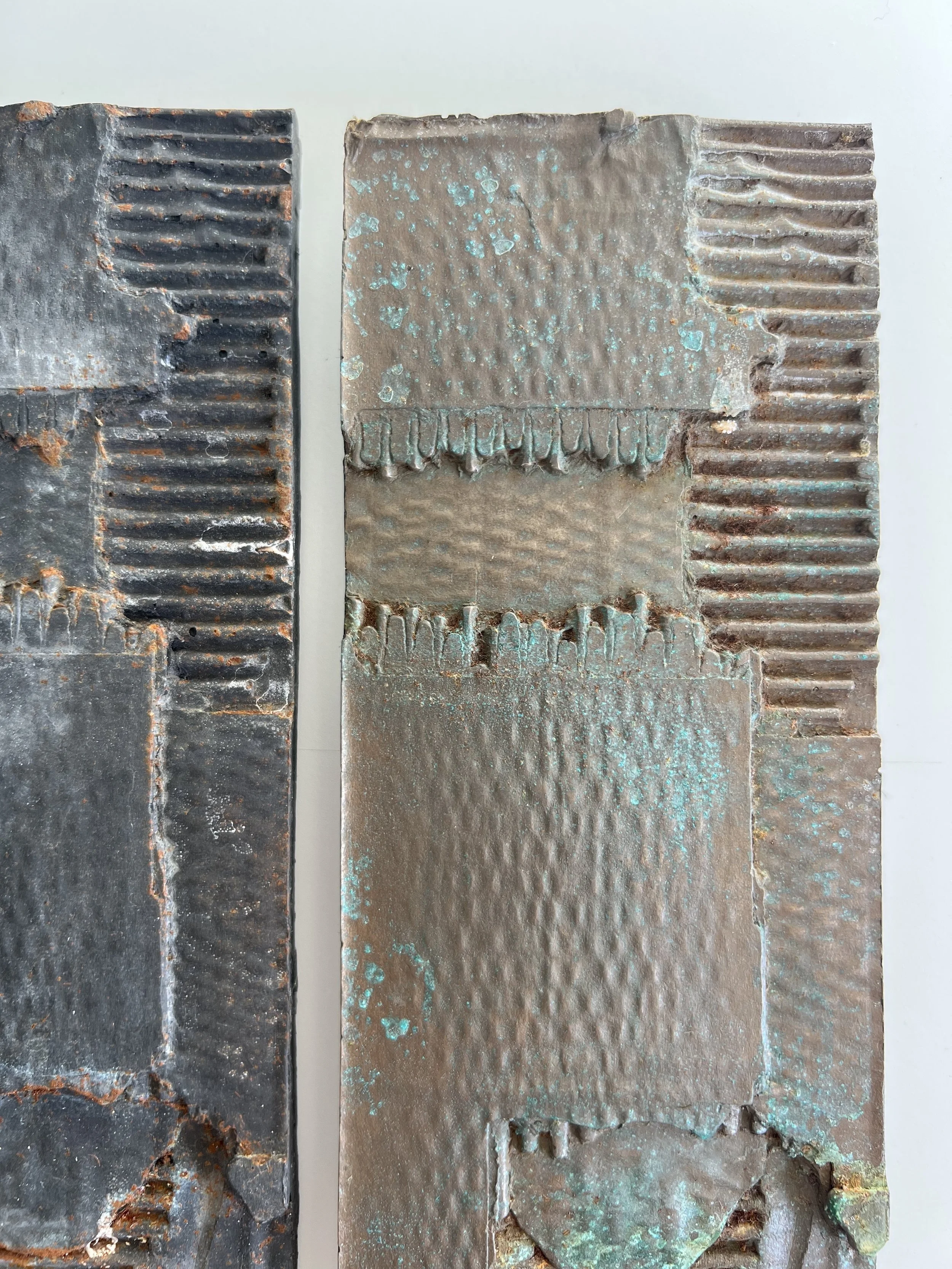Working with resin
Over the last couple of months I have been experimenting using bronze and iron resin in my work. Taking an existing piece made from Jesmonite and making a silicone mould, I then created two subsequent duplicates in bronze and iron resin (you can see the three pieces in the first image below).
Initially, I had planned to ‘buff’ different areas of the bronze resin piece, creating sections of high shine areas to contrast with duller, muted parts. I had no clear plan for the iron resin piece, it was purely a case of experimenting, adapting along the way and seeing how it turned out.
Once the pieces were made, I was reluctant to work into them at all. I didn’t want to ruin the consistency and evenness of the bronze tone and I liked the flat, dull colour of the iron resin piece. The iron resin piece in particularly had an unexpected depth and presence that I wasn’t expecting, despite it’s modest size. So both pieces sat in my studio for a while, gathering dust while I over-thought the potential to ruin them.
My plans for the work began to change after a conversation with a curator who asked how I preserved and maintained my work, should it be exhibited or purchased privately. Although, I had not given the subject of preservation too much thought before, I was drawn to the notion of subverting the idea of maintenance, degrading and debasing both new pieces to partially break down the bronze and iron resin over a short period of time.
The motivation in wanting to deteriorate the two pieces comes from a broader interest in the worth and value of art and this is a theme that runs through my practice. With that in mind and relating to this work specifically, I was asking myself two questions; does art become less covetable if it’s broken down rather being preserved? and does art lose aesthetic and monetary value if it is aged and degraded?
So inspite of the fear of ruining the work, I started to treat small areas of both pieces, first with pure alcohol (bad idea) and then with pure vinegar. From there, I used a copper acetone solution, dabbing sparingly to begin with and then applying a bit too liberally. There was zero research into how this would affect my work but it’s brilliant blue colour has been goading me into use for months. Eventually I gave in couldn’t and resist seeing how it would react with the bronze and iron resin.
Finally - and this time doing some research - I sprayed different sections of the pieces with salt water. I then left the work outside for two days and one evening in typical English winter conditions - relatively mild but dull, damp and grey. Seeing the affect of the salt water l re-sprayed the sections and again put the pieces outside, this time for two days and two nights but in different conditions - clear skies and cold conditions with temperatures dropping well below zero at night.
The images below show how the pieces currently look. I’ve included images in different levels of light to show how both pieces react in changing light conditions. Although they both still continue to age slowly, the process has eased considerably and is approaching more of a settled or finished state.
Left (Untitled), bronze and polyester resin, 31.6cm x 9.4cm x 1cm
Centre (Untitled), iron and polyester resin, 31.5cm x 9.3cm x 1cm
Right (Untitled), jesmonite and cardboard, 32cm x 9.5cm x 1.5cm
Applying copper acetone solution.
First spray with salt water solution.
Experimenting with presentation of the three pieces. Wall mounted (rather than leaning on the wall) which gives them a slightly quasi-religious feel.
Both pieces work beautifully in the sunlight.
Comparing the same areas of the two pieces, looking at how each mark and break down differently. There is an almost iridescent quality to some areas of the bronze piece which changes in different light conditions.
Detail of the bronze piece (with small dog hair). This is after the second spray with salt water solution which really started to break down the bronze resin.
Detail of the iron piece, the rusting is a little more subtle compared to other sections. The rusting against the ash and black colour is really striking.








